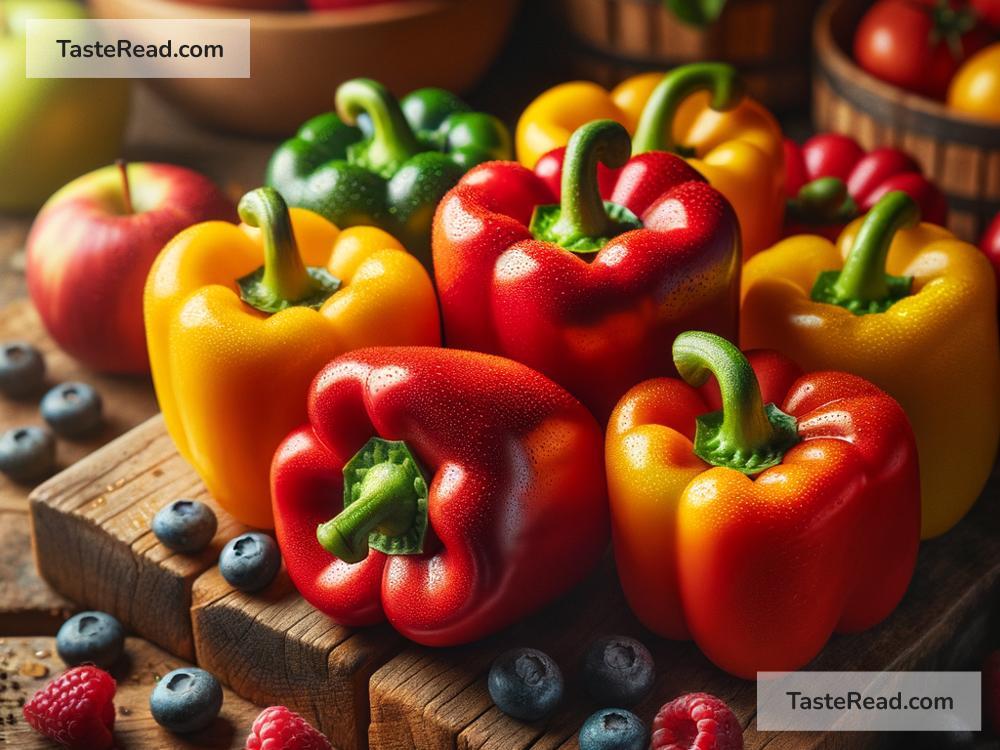Why Bell Peppers Are Technically Fruits: A Simple Explanation
Most people think of bell peppers as vegetables. After all, they’re a staple in salads, stir-fries, and savory dishes. But did you know that bell peppers are technically fruits? That might sound surprising, especially if you’re used to eating them alongside lettuce, cucumbers, and tomatoes. Let’s break this down and learn why bell peppers belong to the fruit family—no complex science talk, just simple explanations.
What Makes Something a Fruit?
First, we need to understand what a fruit actually is. Many people think of fruits as sweet things, like apples, strawberries, or bananas. But in botanical terms (which is how scientists classify plants), a fruit isn’t defined by taste. Instead, fruits are parts of plants that develop from flowers and contain seeds.
You’ve probably seen seeds inside bell peppers when you cut them open. That’s a big clue! The seeds inside are what officially classify bell peppers as fruits. Fruits grow to protect seeds and help plants spread them for reproduction. When animals or humans eat fruits, the seeds can be carried elsewhere and have a chance to grow into new plants.
So, next time you see seeds inside something, think about whether it might actually be a fruit, even if it tastes savory like a bell pepper—or even a tomato!
Why Are Bell Peppers Thought of as Vegetables?
Now you might wonder: If bell peppers are technically fruits, why do we call them vegetables? The answer has less to do with science and more to do with how we use and eat them.
In cooking, fruits and vegetables aren’t divided by their biology—they’re categorized based on taste and how we prepare them. Fruits are typically sweet or tangy and often treated as dessert or snacks. Vegetables tend to be more savory or earthy, usually cooked as part of main dishes or sides.
Bell peppers aren’t sweet like oranges or peaches, so people usually think of them as vegetables. You don’t often see them in desserts; instead, we chop them into salads, roast them, or use them in sauces. But being a vegetable in the kitchen doesn’t change the fact that bell peppers are fruits in the world of science.
What About Other Fruits That Seem Like Vegetables?
Bell peppers aren’t alone! There are several other foods that most people think of as vegetables but are technically fruits. Here are a few examples:
-
Tomatoes: Like bell peppers, tomatoes contain seeds and grow from the plant’s flower. That makes them fruits, even though they’re often used in savory dishes like pasta sauces or soups.
-
Cucumbers: Yes, cucumbers are fruits, too! They have seeds inside and develop from the flowering part of the plant.
-
Zucchini: This popular green veggie for grilling and sautéing is actually a fruit by definition because of its seeds and origin from a flower.
-
Eggplants: Another common “vegetable” tricking people—it’s a fruit!
All of these foods have something in common: they grow from flowers, and they contain seeds. This simple rule is what puts them in the fruit category scientifically, even if they behave like vegetables in the kitchen.
Fun Facts About Bell Peppers
Now that we know bell peppers are fruits, let’s have a little fun with these colorful beauties. Their diversity might surprise you!
-
Colors and Ripeness: Bell peppers come in different colors—green, red, yellow, orange, and even purple. The color often depends on how ripe the pepper is. Green peppers are less ripe, while red peppers are fully matured. The taste also changes as they ripen, becoming sweeter.
-
Vitamin Boost: Bell peppers are packed with nutrients. Red bell peppers, in particular, are loaded with Vitamin C—more than you’d find in an orange!
-
No Spicy Surprise: Unlike chili peppers, bell peppers aren’t spicy. They belong to the same plant family (Capsicum), but they don’t produce capsaicin, the compound responsible for the spicy kick.
-
Seeds Are Optional: The seeds inside bell peppers are edible, but most people scoop them out before cooking. If you’re saving seeds for planting, make sure you’re using non-hybrid varieties, so they’ll grow properly.
Does This Change How You Think of Bell Peppers?
So there you have it: bell peppers are fruits! Whether you chop them into a salad or stuff them with rice, you’re technically eating fruit, even if it doesn’t feel like it. This surprising classification makes us rethink how we view many foods we eat every day.
Next time you’re at the grocery store or planning your meals, you can impress your friends and family with this fun fact. Who knows? Maybe it’ll spark a fun conversation about whether other “vegetables” might secretly be fruits, too.
In the end, scientific classifications are fascinating, but what matters most is how much we enjoy the food we eat. Bell peppers might technically be fruits, but they’ll always be welcome in savory dishes. Whether you call it a fruit or a vegetable, its versatility and flavor make it a winner in any meal!
So, next time you cut open a bell pepper, take a moment to admire those seeds inside—it’s proof that you’re holding a fruit in your hands.


